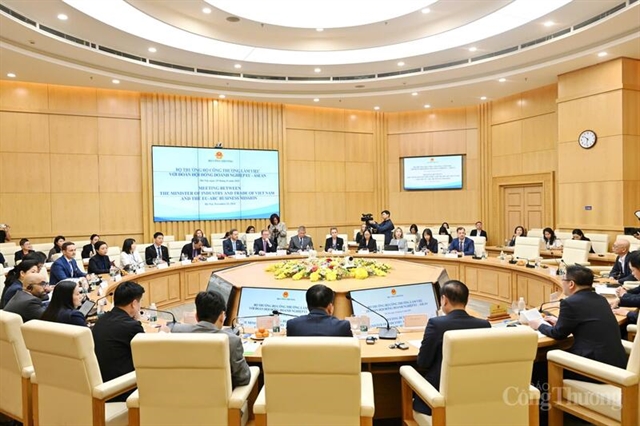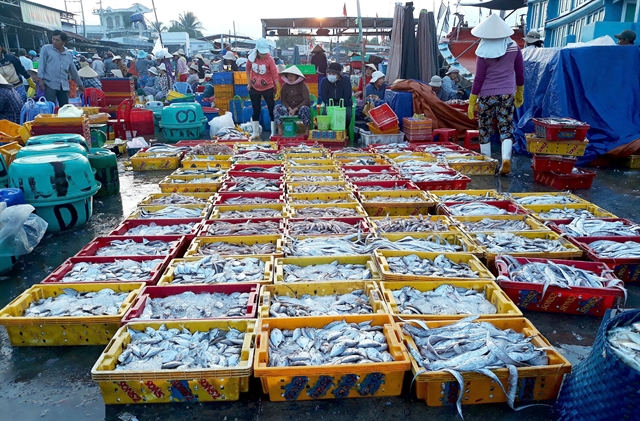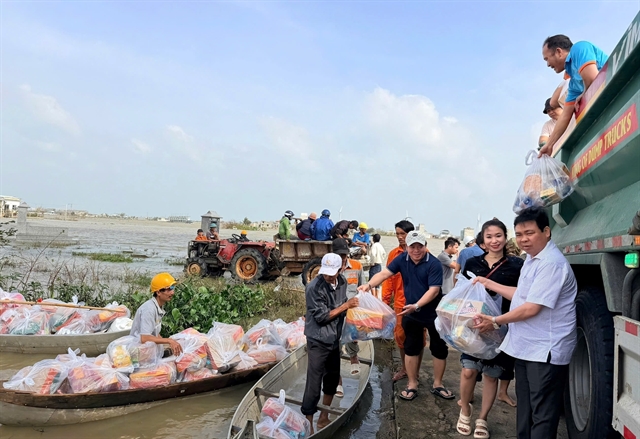 Economy
Economy

Việt Nam’s seaculture area is set to reach 270,000ha with expected marine production of 750,000 tonnes by 2020.

|
| Fish caught in the central coastal province of Ninh Thuận. The total area of Việt Nam’s fisheries is set to reach 270,000ha with expected marine production of 750,000 tonnes by 2020. VNA/VNS Photo Nguyễn Hữu Thành |
HÀ NỘI Việt Nam’s seaculture area is set to reach 270,000ha with expected marine production of 750,000 tonnes by 2020.
The target is a part of the seaculture development strategy for 2030 with a vision to 2050 developed by the Ministry of Agriculture and Rural Development.
According to Lê Trần Nguyên Hùng, head of the Reservation Department under the Directorate of Fisheries, the strategy included ground-breaking orientations to develop modern aquafarming and meet domestic and international market demands.
Moreover, the country’s aquaculture sector – involving both the cultivation of freshwater and saltwater populations – experienced a rapid increase between 2010 and 2017, rising from 2.7 million tonnes to 3.85 million tonnes.
The farming area of white tiger prawns, one of the primary cultivated populations, rose from 17,000ha in 2010 to 100,000ha in 2017, lifting the total area of brackish-water prawn culture to 721,000ha in 2017 with output of 683,000 tonnes.
Farming methods have been improved to be more sustainable and suitable with conditions in different regions.
Good aquaculture practice, production chains and traceability have also been accelerated to boost quality and exports.
Fishing facilities, however, still have room to improve.
According to the directorate’s latest data, Việt Nam had 109,000 fishing boats of which around two thirds were wooden with outdated equipment such as cool rooms.
Due to financial difficulties, fishermen usually use second-hand machinery imported from other countries.
Several stages in the fishing process are still manually operated, which restrains productivity.
There are some 850,000 direct workers in the industry, most of them untrained and lacking basic knowledge in the use of navigation equipment.
Only 34.5 per cent of these workers make it to secondary schools, preventing them from approaching new techniques and innovations in fishing.
Most fishermen do not have labour contracts with vessel owners, leading to a high turnover rate.
Along with developing the economic value of aquaculture, the ministry is focusing on improving fishery reserves.
Ten marine protected areas have come into operation, including Cát Bà Island in Hải Phòng City, Cồn Cỏ Island in Quảng Trị Province and Nha Trang Bay.
Six others are waiting for approval.
In the past five years, thanks to the collaboration of public and private sectors, 171 tonnes of fish fry, mostly precious indigenous species, have been released into Việt Nam's seas, lakes and other natural water bodies.
Millions of prawns have been released in the provinces of Bạc Liêu, Bình Thuận, Khánh Hoà and Nam Định.
Việt Nam's fishery reserves include small pelagic fish, big pelagic fish and demersal fish of some 4.36 million tonnes which allow average fishing output of about 2.45 million tonnes per year. VNS




